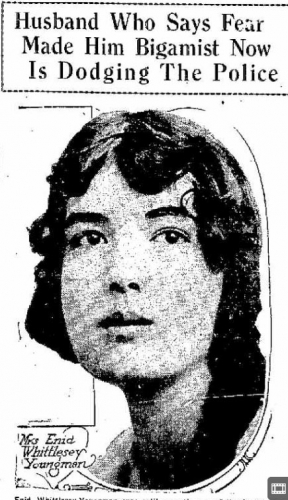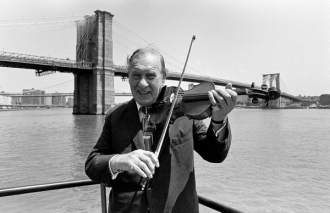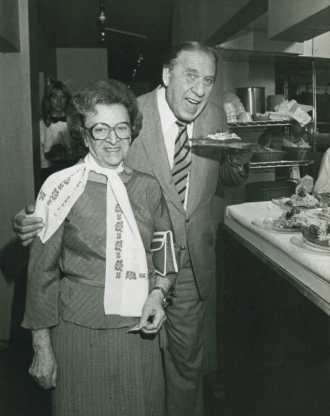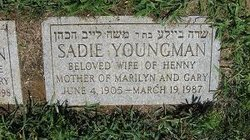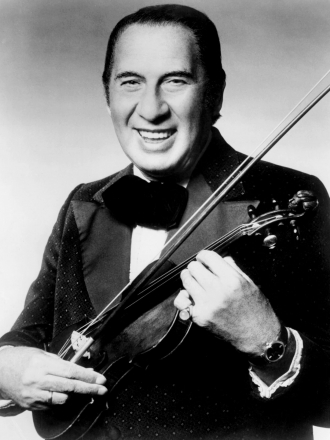Enid Caroline Whittlesey's parents were
Charles Frederick Whittlesey (1867-1941), and Edith May Cruver (1870-1948), and her siblings were Austin Cruver Whittlesey (1893-1950), Harold Cruver Whittlesey (1896-1959), and Beatrice Helen Whittlesey (1898-1988).
Her father, Charles F. Whittlesey, was a famed architect who designed the Philharmonic Auditorium, the Hotel Huntington in Pasadena, a number of railway stations, and was one of the first to use reinforced concrete. See
C. F. Whittlesey Taken by Death for more details.
In the late 1800s the family was living in Chicago, Cook County, Illinois, and in 1906 moved to the San Francisco Bay Area so that Charles could aid in the reconstruction of San Francisco following the 1906 earthquake and associated fire. See
The San Francisco Earthquake - April 18, 1906.
Enid's parents Charles and Edith divorced, and according to the 1920 census, Enid was 25 and living with her mother Edith and brother Harold and sister Beatrice in Berkeley, Alameda County, California. At that time Beatrice was a teacher, and Enid wasn't working.
Enid was passionate about music and dance. She studied under an Oakland musician named Ray Youngman with whom she fell in love. The family didn't approve and sent Enid across country to tour as a dancer with the Marion Morgan Dancers who were a popular vaudeville act at the time. See
The Marion Morgan Dancers.
While many genealogy sources will say that Enid was not married, she was indeed married to Ray Youngman for a brief period of time. Enid's father, Charles, supposedly forced Ray Youngman at gunpoint to marry his daughter in San Francisco one night when it was discovered that Enid and Ray had an intimate relationship. See
Husband Who Says Fear Made Him Bigamist Now is Dodging the Police for details.
Two days later Ray filed annulment proceedings and Enid discovered that her long time love and new husband already had a wife. The marriage was annulled in June of 1921. Enid was absolutely heart broken and isolated herself in San Francisco for a period of time. See
Girl to Forget Sorrow on Stage for more details.
Not much is known about Enid's life after those difficult days in the early 1920s. As with all news, the San Francisco Bay Area eventually forgot about the love triangle, allowing Enid to continue pursuing her dancing career.
The 1940 census tells us that Enid was living in Los Angeles until approximately 1935, then moved to Avenal Kings County California. She was a lodger living with George & Dorothy R Scofield in this rather isolated location. She listed her occupation as an artist. Shortly afterwards, she returned to Los Angeles where she would live for the rest of her life.
Tragically, in March 1981, 86 year old Enid was murdered. A home intruder repeatedly stabbed her and left her to die as he ransacked her home that she had lived in for the prior forty years. Her home was located at 1812 Cimarron Street in Los Angeles. No suspects were known, and unfortunately, the case became cold. Enid is buried in Forest Lawn Memorial Park in Glendale, Los Angeles County, California.
It wasn't until 1997, 16 years after Enid's death, that her murder was solved thanks to Detective Frank Bolan of the Los Angeles Police department. Detective Bolan remembered Enid's unsolved murder case at 1812 Cimarron Street, when investigating recent murders of other elderly women in Inglewood California.
The detective checked to see if fingerprints of a suspect in the recent murders matched those found at Enid's home, and while they did not, the recently updated computerized database file of fingerprints found a match to Karl Franklin Stewart. In January 1997, Karl Franklin Stewart, age 41 by that time, was charged with the murder of Enid Whittlesey. See
Man charged in 16-year-old murder - UPI ARCHIVES JAN. 29, 1997 to read the story of his arrest.
The jurors deliberated only two hours before returning a guilty verdict which resulted in then 43 year old Franklin Stewart receiving a sentence of life in prison without the possibility of parole. See
High-tech conviction.
Her murder was featured on an episode of "Forensic Files" season 7, which first aired on May 17th, 2003. The show is titled "Sleight of Hand" and is described thusly: "The suspect in the 1981 murder of Enid Whittlesey in her California home eludes arrest for 17 years because the police can't tie him to it. That changes, however, when investigators learn the culprit is left-handed, putting a new spin on old facts leading to the arrest and conviction of Carl Stewart."

